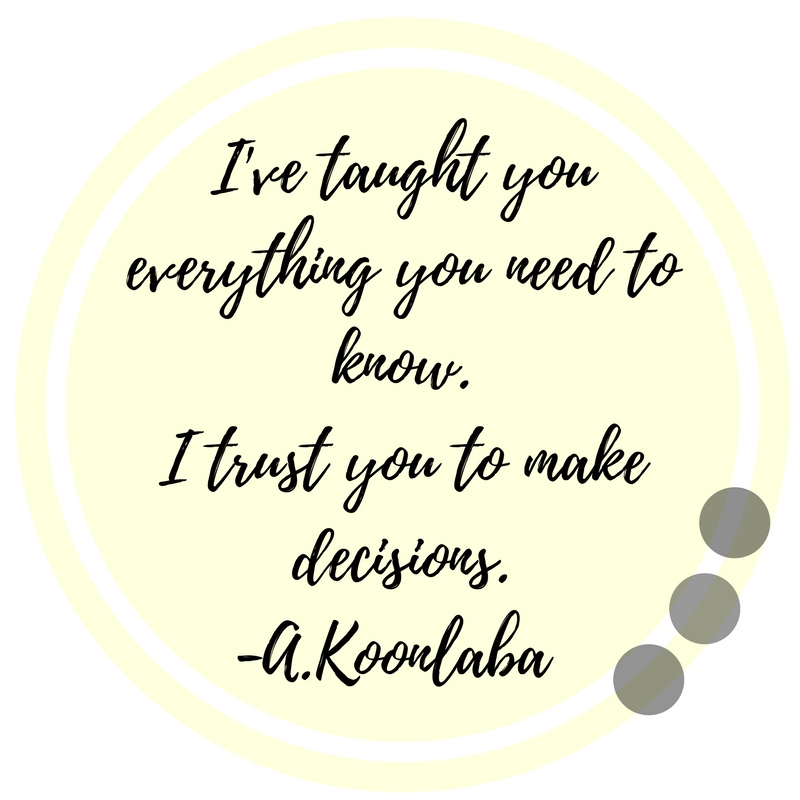Building Trust in the Classroom
4 Min Read • Social/Emotional Learning
One of the biggest challenges for me as an art teacher is building trust in the classroom while teaching almost 600 kids each year. Top that with what I perceive to be an unwillingness of students to take calculated risks with their learning, and you have a whole lot of kids craving one-on-one attention from yours truly.
I know this is a challenge a lot of teachers face.
That gives me some comfort. At least when I see or hear art teachers talking about this, I don’t feel like it is just me and my classroom. Additionally, I think this is something that all teachers probably struggle with, especially when they are trying to teach through arts-integrated lessons.
The arts are naturally open-ended because of the series of decisions that have to be made throughout the creative process. This is not just true of arts-specific classrooms, but to any classroom working through and with the arts.
I Trust You
So, I’d like to share a specific strategy that helps me with this in a BIG way.
I tell the kids that I’ve taught them everything they need to know, and I trust them to make the right decisions. When I first started teaching elementary art, I noticed students seemed to constantly repeat “Like this” or “Does this look good?” or “Can I do the next step?” It would be really overwhelming to try to respond to all of that. Imagine ten kids saying one of those phrases every three to five minutes. I am not exaggerating.
I did quite a bit of reflecting and journaling and thinking to try to get to the bottom of what was making my students feel like they had to solicit immediate feedback from me for every little step of their processes. At first, I thought they were just wanting to talk. Then, I thought they just wanted my attention. Finally, I realized it is a form of insecurity.
Open-ended tasks, such as art-making, are difficult for students who are used to right and wrong answers. They simply don’t trust themselves to make a decision about something that isn’t labeled A, B, C, or D.
Model and Practice
I modeled how it looks to work without calling out to the teacher. Don’t laugh. I actually sat at a table with supplies that the students use and modeled. First, I showed them what it looks like for someone to be calling out at the teacher. Then, I showed them what it looks like when someone has the urge to callout but thinks about how the teacher told them she trusts them. I modeled working through an insecurity. We talked about the differences.
Of course, I also had them practice this themselves. I asked them to be very mindful of their behavior. To think about the times they feel like they want to callout. We discussed what makes them feel that way. I wrote those things on the board. I was not surprised to see that I was correct in my analysis of them feeling insecure with open-ended tasks.
Game-Changer
Now, I always make sure to end my instruction by saying “I’ve taught you everything you need to know to make good decisions about your work. I trust you to make those decisions. You will most likely not need to talk to me, but I am here if a crisis occurs. Trust yourself first. You aren’t going to fail at this.”
I look them in the eye and say it with sincerity. I do trust them. They know I am being authentic with my words, and they work without calling out to me for feedback on every little thing. I still walk around and give feedback as they work. They can count on me to do this. So, they know they don’t have to pursue my attention.
This is probably the most powerful and game-changing thing I have ever done in my classroom. I wish I’d realized this much sooner in my career. It has completely changed the culture in my classroom. I highly recommend this to other teachers. You can absolutely steal my statements word-for-word or find something akin to it that works for you. Either way, just do it! You will be so glad you did!




